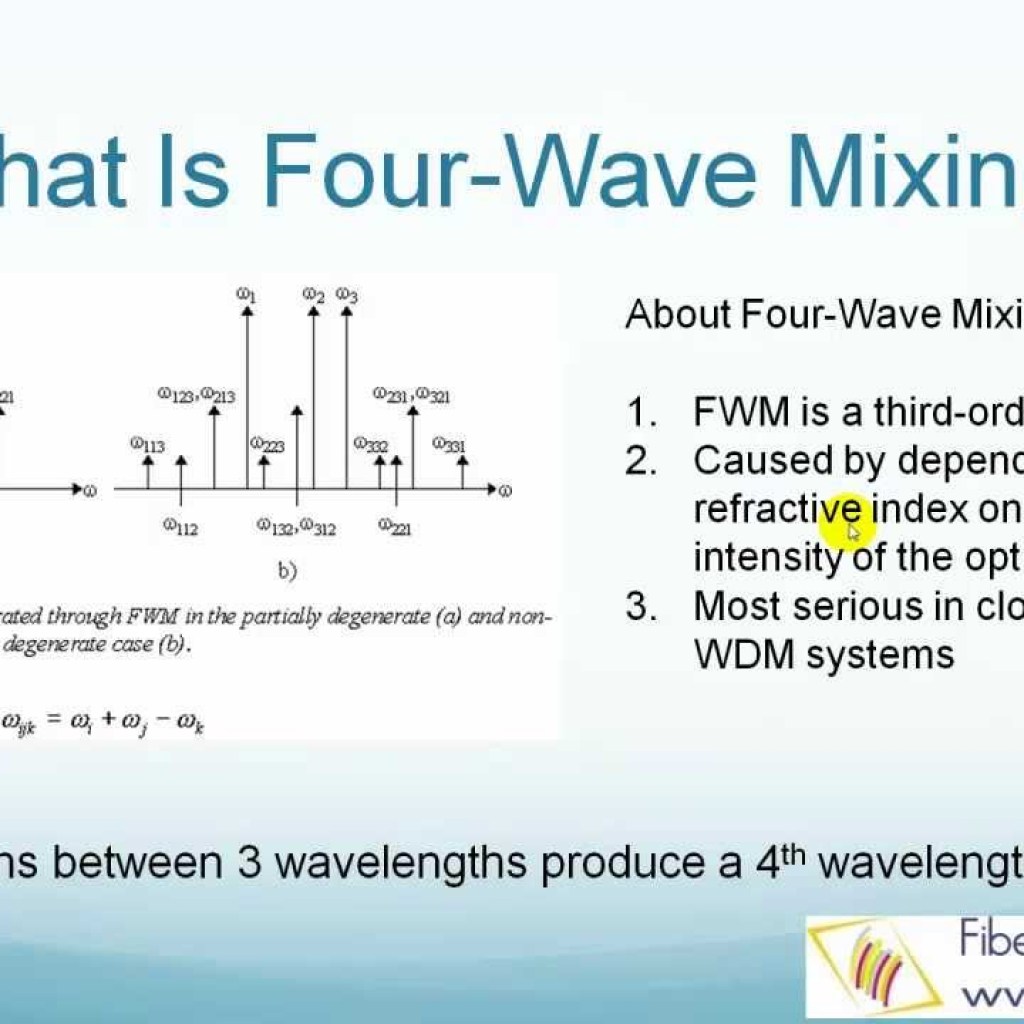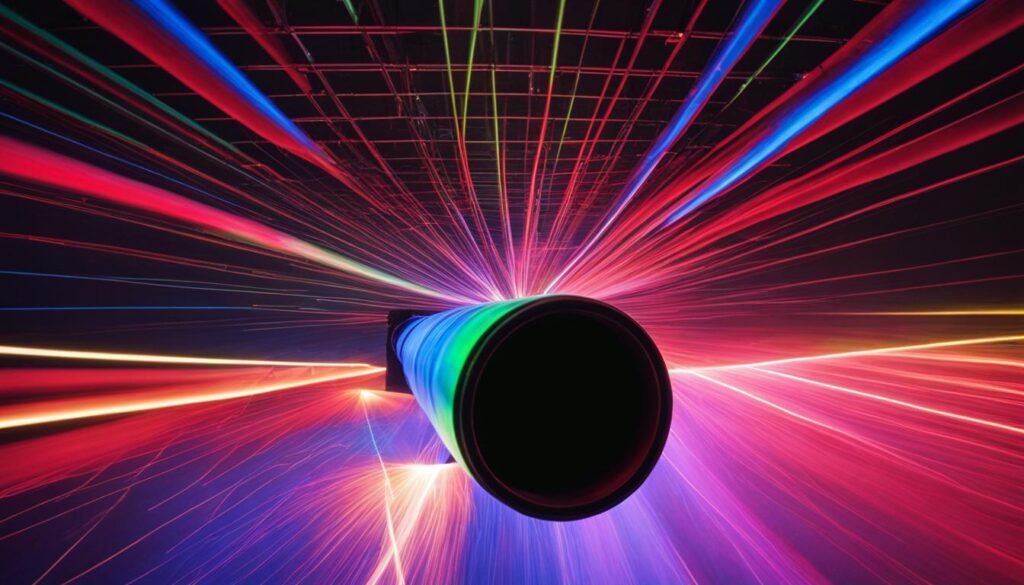Contents

Source: YouTube
The Fascinating World of Four-Wave Mixing in Photonics
Understanding Four-Wave Mixing
Four-wave mixing is a nonlinear optical effect that occurs when multiple optical frequency components interact in a nonlinear medium such as an optical fiber. This phenomenon can lead to the generation of new frequency components through a refractive index modulation at the difference frequency.
Degenerate vs. Nondegenerate Four-Wave Mixing
In nondegenerate four-wave mixing, four different frequency components interact, while degenerate four-wave mixing involves two frequencies coinciding. This effect can be utilized for parametric amplification and spectral broadening in various optical systems.
Phase Matching in Four-Wave Mixing
Four-wave mixing is a phase-sensitive process, meaning that its efficiency depends on the relative phases of the interacting beams. Phase matching conditions, influenced by factors like chromatic dispersion and nonlinear phase shifts, play a crucial role in determining the extent of four-wave mixing effects.
Applications of Four-Wave Mixing
Four-wave mixing finds applications in diverse fields such as supercontinuum generation, optical parametric amplifiers, and laser spectroscopy. It can be both beneficial, as in wavelength channel translation in optical communications, and detrimental, causing crosstalk and power imbalances in fiber optic systems.
Conclusion
In conclusion, four-wave mixing is a fascinating nonlinear optical effect with a wide range of applications in photonics and optical communications. Understanding the principles and implications of this phenomenon is crucial for optimizing the performance of optical systems and devices.

Source: YouTube
Feel free to comment your thoughts.



